Import orders
As mentioned earlier, you can import an order file to add multiple order lines in an easy way to T1. You can also use the Import function for updating existing orders.
Note:
- Please note that to update orders by importing a file, the order status should be “Draft” or “Submitted”, if the Order Sync option is deactivated for the catalog, or “Draft” or “Reopened” if this option is activated.
Order lines should be listed in an Excel sheet with the following columns:
- Order Reference: a reference to the order, it should be unique per catalog (Mandatory). When importing a new order, the reference should be unique but if you are updating an existing order, the file should contain the order reference that you are updating.
- Alias: any text describing the order (Optional).
- Customer Code: each order should contain one customer code (Mandatory).
- Location Code: each order should be associated to one location only (Mandatory).
- Customer Reference: this field may contain any reference to the internal system used by the customer to link orders in T1 to their internal systems. This value should be unique per order (Optional).
- Article Number: the article that is ordered (Mandatory).
- Customer Required Date (CRD): the date on which the customer needs to receive the order (Mandatory).
- Delivery Date: the date on which the goods can be delivered (Optional).
- Forecast: the expected quantity to be ordered of this order line (Optional).
- Comment: any comment you want to enter for the order line (Optional).
- Size: size of the article (Mandatory).
- Size Index: the size index value for the specified size (Mandatory) .
- Quantity: the number of items of the specified size (Mandatory).
- The below is an example:
To import the file, follow these steps:
- Click the Import button, the following window appears:
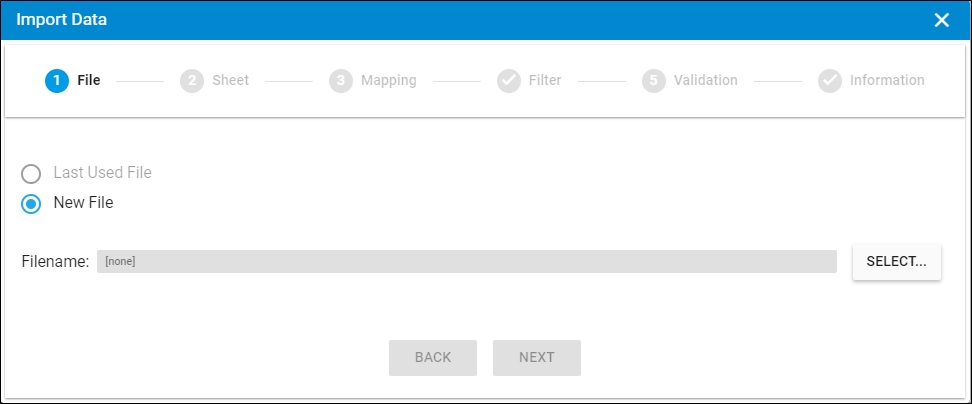
- Click Select to browse for the file you want to import,
- Select the file then click Open, the name of the file you selected appears in its field,
- Click Next, the following window appears:
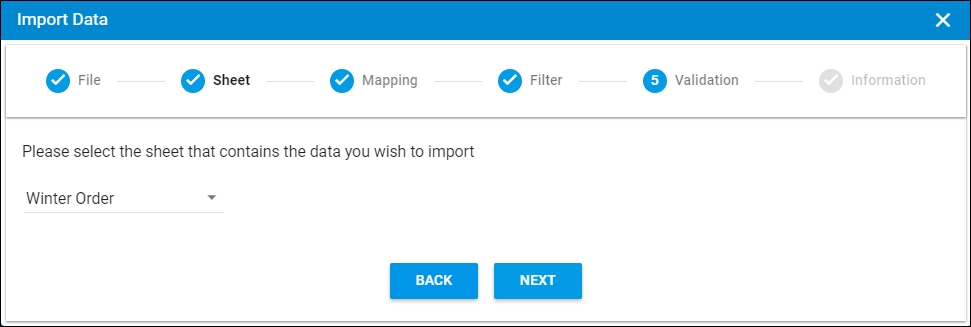
You can click Back to return to the previous window.
- Select the sheet you want from the dropdown list in case your file contains more than one sheet,
- Click Next, the following window appears:
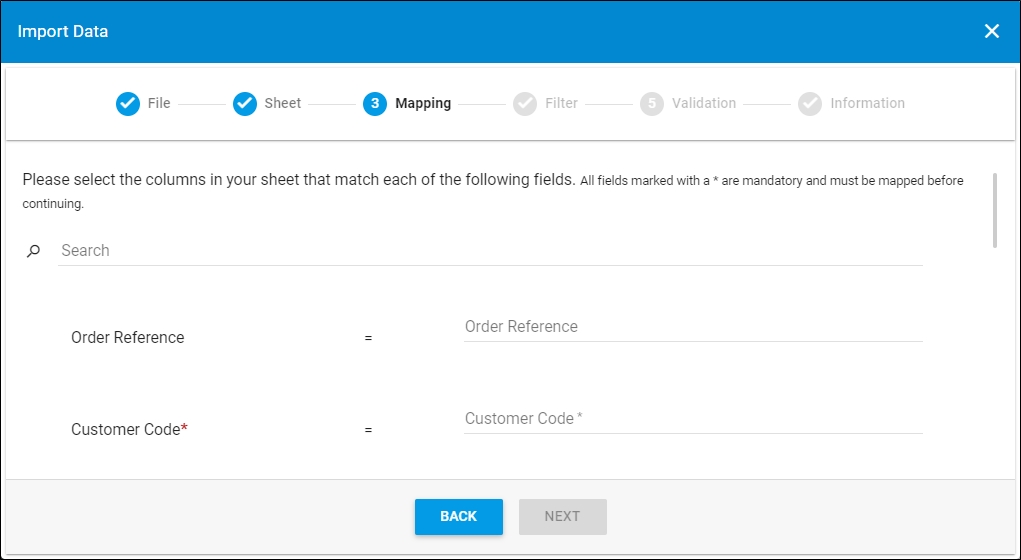
- Select the column of the sheet that matches each field, you can search for the field you want using the search field, then click Next, the following window appears:
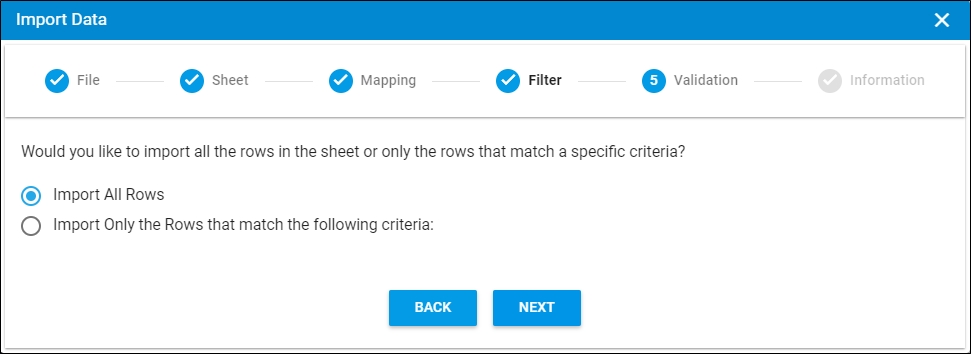
- Click the radio button next to the import method, either all rows or rows that match certain criteria, a validation window appears informing you if records are valid or not, if not, you need to fix the sheet then import the file again,
- Click Next, the following window appears:
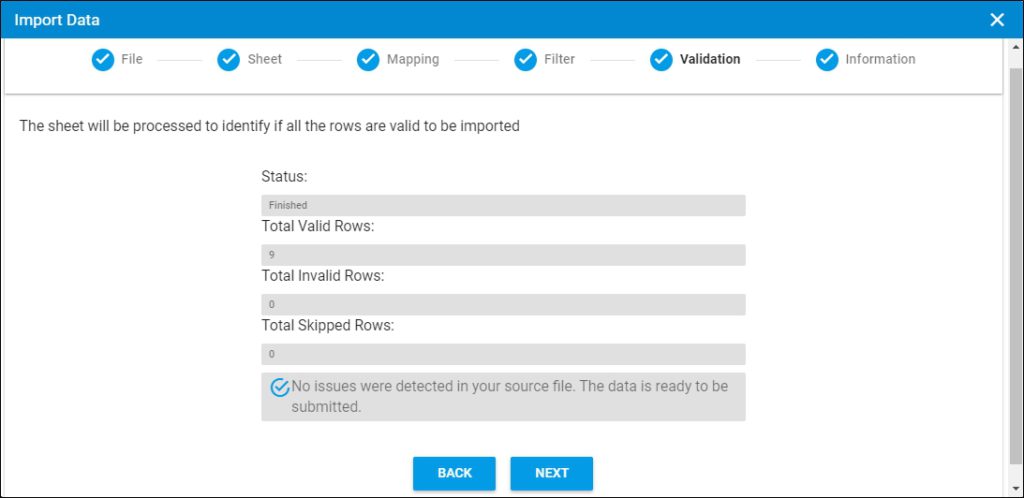
The validation window shows the status of the import process, the total number of valid rows, and the total number of invalid and skipped rows. The above example shows that all the rows are valid.
- Click Next, the following window appears:

- Click Submit, the progress is displayed,
- Wait until the job is finished, then refresh the page, the order is imported, and its processing status is “Submitted”. Orders with rejected order lines are highlighted in Red as shown above.
You can view the order details, the order lines, the rejected order lines, the order file, and notifications. You can also delete orders, approve or reject orders and reopen rejected orders as discussed in the following sections.
Notes:
- An order might have a combination of active order lines, inactive order lines, and rejected order lines.
- The order file is created upon importing an order only if there is an order plugin assigned to this catalog.
- If changes are not reflected on the page, refresh the browser by pressing F5.
- If any of the records are invalid, you can skip them by clicking the checkbox next to Skip invalid rows as shown in the below example:
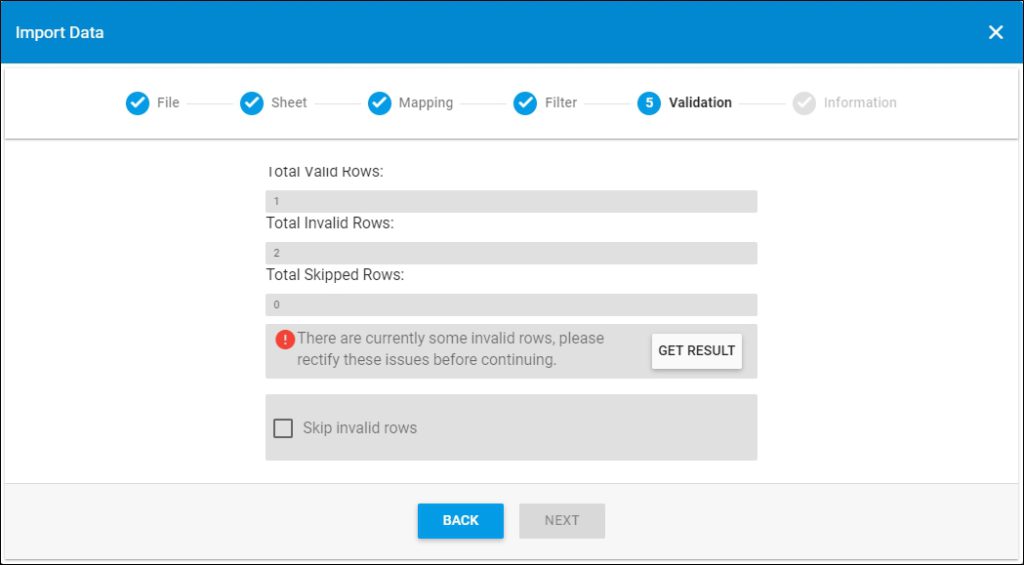
The Next button is activated, and you can import the valid rows.